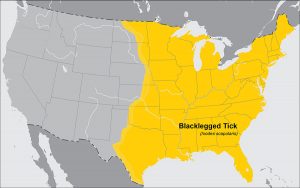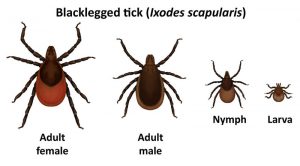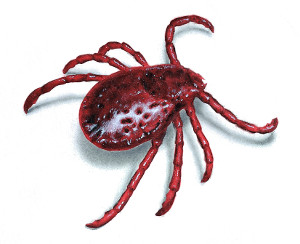Ticks, those tiny arachnids that can carry dangerous diseases, are a major concern for outdoor enthusiasts and health officials alike. But when exactly can we expect these bloodsucking pests to emerge each year?
The answer depends on a few factors, especially where you are in the US.
Factors Affecting Tick Timing
Several factors affect when tick season officially starts and stops in each region. A few of the more certain factors include:
Temperature
Temperature is one of the primary factors affecting tick activity. Simply put, ticks prefer warmth. As a cold-blooded species, ticks require external sources of heat to regulate their body temperature. When temperatures consistently reach 50 degrees Fahrenheit or higher, ticks become more active and begin to search for a host. Conversely, if temperatures remain consistently below freezing, tick activity will be greatly reduced.
Humidity
Tick’s like it a little damp, so humidity also plays a significant role in tick activity. These parasites require a certain level of moisture in the air to survive, and high humidity can help them stay hydrated and active.
Daylight
Daylight hours also influence tick activity patterns. These creatures are most active during the day, with peak activity occurring in the late morning and early afternoon. As the days get longer in the spring and summer, ticks have more time to search for hosts. More daylight helps keep the ground warmer too, which allows ticks to move around more.
Additional factors such as the availability of hosts, habitat, and weather patterns such as rainfall and drought can all impact tick activity. All of these variables can influence when ticks begin to emerge each year and how active they are throughout the season.
Given the risks associated with tick-borne diseases such as Lyme disease, it’s important for anyone spending outside during tick season – hiking, working, camping, etc. – to be vigilant and take precautions such as wearing bug protective clothing, using tick repellent, and performing tick checks after spending time outdoors. By staying informed about tick activity patterns and taking appropriate measures, we can reduce the risk of tick bites and the diseases they can transmit.
Tick Season, by State
Maine, Vermont, and New Hampshire
Ticks typically begin to emerge in these states in late March or early April when temperatures consistently reach 50 degrees Fahrenheit or higher. Tick activity continues through the spring and summer months, with peak activity occurring in May and June. Ticks will remain active in these states through September and into early October before activity levels decrease with the onset of colder weather.
New York, Connecticut, and Massachusetts
Ticks also typically begin to emerge in NY, Connecticut, and Massachusetts in late March or early April. Tick activity peaks in May and June before gradually declining through the summer and into the fall. In these states, ticks may remain active through October or November, depending on the weather patterns. Little known fact – the namesake of Lyme disease, is a town called Lyme in Connecticut.
Maryland, West Virginia, and Virginia
Ticks in Maryland and the mid-Atlantic states tend to get active earlier in the year than in northern states, with activity beginning as early as February in some areas. Tick activity peaks in May and June, and then gradually declines through the summer and into the fall. Ticks in Maryland can remain active well into the fall, with activity typically declining in November assuming the temps are normal for the season.
Ohio, Illinois, Wisconsin, and Minnesota
In these states, ticks get their start in late March or early April and remain active through the summer months. Peak activity occurs in May and June, and tick activity levels generally begin to decline in August or September. Ticks can remain active in these states through October or November, depending on the weather patterns.
Illinois and Indiana
Tick season typically begins in early spring, around March or April, and can last through the fall, until October or even November. The peak of tick activity generally occurs in May and June, but ticks can remain active well into the summer and fall months. Expect their numbers to subside starting in early November.
Pennsylvania
Like the Northeast, ticks begin to be active in late March or early April and lasts until November. The highest tick activity occurs in May, June, and July, but tick bites can occur at any time during the active season. If fall is warm, they can go strong until mid-November.
North Carolina
As you go south, the tick season is earlier and longer. Tick season can begin as early as February or March, with peak activity typically occurring in May and June. Ticks can remain active through the summer and into the fall, with the season generally lasting until October or November.

South Carolina
Tick season typically begins in March or April, with peak activity occurring in May and June. The season can last through the fall, with tick activity levels gradually declining as temperatures begin to cool in October and November. Later, warmer falls obviously keep ticks active longer.
Tennessee
In Tennessee, the ticks can start as early as early March, with peak activity occurring in May and June. The season generally lasts through the summer and into the fall, until October or November, although tick activity levels may vary depending on the weather patterns in a given year. The mountains of East Tennessee may see ticks start to fade earlier than the lowlands.
It’s worth noting that tick activity patterns can vary from year to year depending on weather conditions and other factors. It is also important to keep in mind that we are talking about averages here. It is technically possible for a tick to be active anytime during the year, such as during an abnormally warm winter week.
Timing Differences Between Blacklegged (Deer) Tick and American Dog Tick
Blacklegged ticks, also known as deer ticks, and American dog ticks (which many consider to be the “normal” tick because it is the one you probably grew up around), two of the most common tick species in the country, have distinct differences in their activity patterns. It is just one of the differences between Deer ticks and Dog ticks.

Blacklegged ticks typically emerge earlier in the year than American dog ticks, with peak activity occurring in May and June, and tick activity levels generally beginning to decline in August or September. However, these ticks can remain active well into the fall, particularly in regions with milder weather patterns. This prolonged activity can pose a significant health risk, as blacklegged ticks are known carriers of several tick-borne illnesses. Blacklegged ticks can be very active as young, small ticks, whereas Dog ticks tend to be more active as adults.
In contrast, American dog ticks tend to emerge later in the year, usually in late April or early May, with peak activity occurring in June and July. Tick activity then gradually declines through the summer and into the fall, with most ticks becoming inactive by October. Although these ticks are not known carriers of Lyme disease, they can transmit other serious tick-borne illnesses such as Rocky Mountain spotted fever.
Regardless of the tick species present in a particular area, we want you to take appropriate precautions to reduce the risk of tick bites anytime you are in tick habitat. Check out many other pieces here at the Tick and Mosquito Project for tips on how to avoid ticks year-round.






